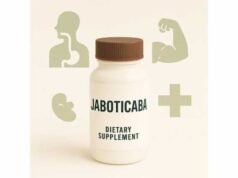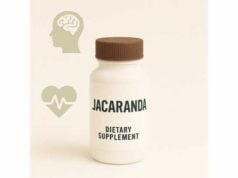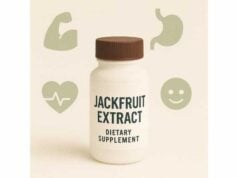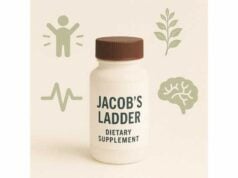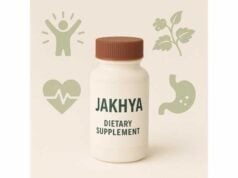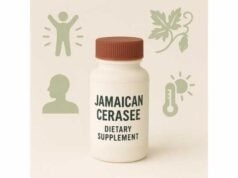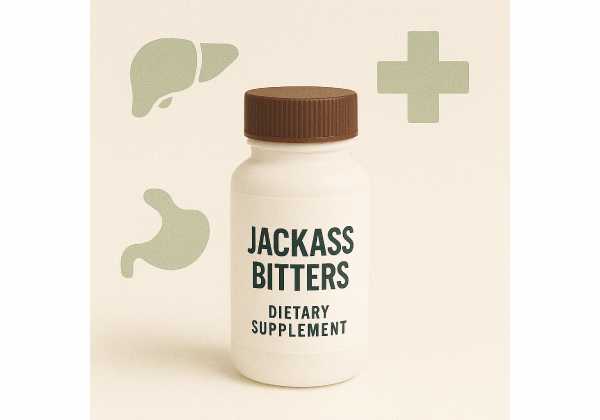
Jackass bitters (Neurolaena lobata), a strongly bitter shrub native to Central America and the Caribbean, is a staple of local herbalism from Belize to Guatemala. Healers traditionally use the leaves and young stems as a tea, wash, or tincture for skin infections, digestive upsets, and recovery after illness. Modern phytochemistry explains some of that reputation: the plant is rich in sesquiterpene lactones (neurolenins, lobatolides, and related furanoheliangolides) that show antimicrobial, anti-inflammatory, and antiparasitic activity in laboratory models. Still, human clinical evidence is limited, and safe, standardized dosing has not been established. Because sesquiterpene lactones are bioactive—and can also irritate skin or the gut—smart use means starting low, staying topical when possible, and avoiding concentrated extracts unless you know exactly what you are using and why. This guide translates the science and folk practice into careful, practical steps: what jackass bitters is, what benefits are plausible today, how people commonly prepare it, how much to take if you choose to use it, who should avoid it, and how the evidence stacks up.
Quick Summary
- Leaf extracts show anti-inflammatory and antimicrobial actions in vitro and support wound healing in animals.
- Bitter teas and washes are the safest traditional forms; tinctures and strong extracts demand caution.
- Practical range: 1–2 g dried leaf (or 1 fresh leaf, ~0.5–1 g) per 250 mL hot water, up to 1–2 cups/day for short courses.
- Avoid during pregnancy, breastfeeding, in children, with autoimmune disease, or with liver conditions and anticoagulants.
Table of Contents
- What is jackass bitters and how it works
- Which benefits are most plausible
- How to use it, step by step
- How much and how often (dosage)
- Risks, side effects, and who should avoid
- What the evidence actually shows
What is jackass bitters and how it works
Jackass bitters is the common name for Neurolaena lobata, a tropical Asteraceae (daisy family) shrub easily recognized by its deeply veined, three-pointed (“tres puntas”) leaves and a distinctive aroma released when the leaf is crushed. In Belize and parts of Guatemala, fresh leaves are brewed into a very bitter tea, applied as washes to the skin, or macerated in alcohol as household tinctures. Practitioners use it as a general “clean-out” herb after infections, as a topical for minor wounds and fungal overgrowth, and occasionally as part of traditional antiparasitic regimens.
Chemistry and mechanisms. The plant’s bitterness comes from sesquiterpene lactones (notably neurolenins and lobatolides) and a supporting cast of polyphenols and terpenoids. In cell and animal models, these compounds:
- Dampen inflammatory signaling pathways (for example, reducing cytokines like TNF-α and interfering with NF-κB–related activity).
- Inhibit or weaken certain microbes in vitro, including common skin and wound bacteria.
- Show antiplasmodial activity against Plasmodium falciparum in vitro and macrofilaricidal effects in lab screens.
- Exhibit cytostatic or pro-apoptotic effects in cancer cell lines (lab signals, not treatment guidance).
Forms and what they deliver. Traditional water infusions extract bitters moderately, producing a manageable cup. Hydroalcoholic tinctures pull more sesquiterpene lactones; they are potent and may irritate the gut in sensitive people. Topicals (washes, compresses, salves) concentrate the practical benefits for skin while limiting systemic exposure. Powders and capsules vary widely and can be unpredictable; many knowledgeable herbalists avoid encapsulated “high-dose” products altogether for this plant.
What it is not. Jackass bitters is not a shortcut to treat serious infections, malaria, or chronic inflammatory disease. It’s a supportive, bitter botanical with interesting lab data and deep cultural use, best positioned today for short-course digestive bitters, careful topical use, and research—not as a stand-alone cure.
Which benefits are most plausible
When people ask what jackass bitters “does,” they usually want to know what outcomes they might reasonably expect without overpromising. Based on traditional use patterns and modern lab data, four areas make the most sense:
1) Calming inflamed or irritated skin (topical).
Leaf extracts reduce inflammatory mediators in cells and support faster wound closure in animal models. For day-to-day life, that suggests a role for short-term washes or compresses on minor, non-infected skin irritations or as an adjunct to standard wound hygiene. It is not a replacement for medical care, but it can be a useful supportive topical when handled carefully.
2) Digestive “bitters” before meals (culinary-strength teas).
Bitter flavors can promote a conditioned digestive response—light salivation and gentle priming of gastric activity. A weak infusion sipped 10–15 minutes before a meal may help some people with occasional post-prandial heaviness. The key is weak and brief: jackass bitters is very strong, and more is not better. Many find a single fresh leaf (or ~1 g dried) per cup quite sufficient.
3) Short-course antimicrobial support (adjunct, not primary care).
In vitro studies show activity against several bacteria and enveloped viruses, and field ethnobotany aligns with washes for minor cuts or overgrowths. In practice, that means clean the area first, then consider a diluted, cooled tea as a brief rinse; discontinue if irritation appears; and seek medical evaluation for any spreading, hot, or painful lesion.
4) Convalescence and “toning” after illness (traditional context).
In local practice, a few days of diluted tea after recovery helps people feel “reset.” The likely contributors are bitter-mediated appetite support and light antimicrobial effects from water-extracted constituents. Keep courses short (several days), hydrate well, and use common sense—if you feel worse, stop.
Signals to treat modestly.
Jackass bitters also appears in studies of antiplasmodial and antineoplastic activity; these are lab signals, not green lights for self-treatment. If you’re managing malaria risk, autoimmune disease, cancer, or chronic infections, do not substitute this herb for proven therapies. Its most grounded benefits sit with skin support, gentle digestive bitters, and short, conservative courses.
How to use it, step by step
Because jackass bitters is powerful and very bitter, preparation method and strength matter. Here are straightforward, safety-forward options that align with tradition and current prudence.
A) Weak tea (infusion) for digestive bitters
- Measure: Use 1–2 g dried leaf (about 1–2 teaspoons loosely crumbled) or one fresh leaf (~0.5–1 g) per 250 mL just-off-boil water.
- Steep: Cover and steep 5–10 minutes. The longer you steep, the more bitter it becomes; start on the low end.
- Strain and taste: It should be bitter but not punishing. If it is harsh, dilute by half.
- When to take: Sip 10–15 minutes before a main meal, up to once or twice daily for 3–7 days.
- Stop if: You feel nausea, cramping, reflux, mouth/throat irritation, or dizziness.
B) Skin wash or compress (topical)
- Brew a weak tea as above and let it cool to lukewarm.
- Clean the area gently with soap and water first.
- Apply the cooled tea with clean gauze for 5–10 minutes, once daily for up to 3–5 days.
- Moisturize afterward if skin feels dry; sesquiterpene lactones can be astringent.
- Stop and seek care if redness, swelling, or pain worsens, or if any signs of infection appear (heat, pus, fever).
C) Tincture (hydroalcoholic extract)—advanced users only
- Because alcohol extracts higher levels of sesquiterpene lactones, tinctures are potent. If you choose to use one, select a clearly labeled product (species, plant part, menstruum ratio, strength). A conservative, traditional approach is 5–10 drops in water before a meal—not dropperfuls. Avoid in anyone with reflux, gastritis, or alcohol sensitivities.
- Do not combine with other strong bitters at the same sitting (for example, gentian or wormwood); over-stacking can provoke nausea.
D) What to avoid
- Capsule “megadoses” or concentrated powders with unknown standardization.
- Long, continuous use; jackass bitters is a short-course herb.
- DIY high-proof extractions if you lack training; poorly filtered tinctures and unknown strengths are where people get into trouble.
Quality and sourcing tips
- Choose suppliers who provide botanical identity (Neurolaena lobata), origin, harvest part (leaf), and lot testing (microbial/heavy metals).
- Avoid mixed “detox” blends that do not disclose exact percentages.
- Store dried leaf airtight, away from heat and light; use within a year for best potency.
How much and how often (dosage)
There is no official dosage for jackass bitters, and high-quality human trials are scarce. The safest path uses culinary-strength preparations and time limits.
Infusion (tea)
- Starting strength: 1 g dried leaf (or one fresh leaf) per 250 mL water.
- Usual range: 1–2 g per cup.
- Frequency: 1–2 cups per day, before meals, for 3–7 days.
- Course breaks: Take at least as many days off as you used it (e.g., a 5-day course → 5 rest days).
- Upper bound (home use): Avoid exceeding 2 g per cup or 2 cups daily without guidance; bitterness and side-effects rise quickly beyond this.
Topical wash or compress
- Use the same weak tea, cooled.
- Apply once daily to small areas for up to 3–5 days.
- Patch test first: dab a small area of inner forearm and wait 24 hours for any rash or itching.
Tincture
- For experienced users with a labeled product, 5–10 drops in water before a meal, once daily, for up to 3 days. This is a conservative approach; if you feel any gastric discomfort or head “swim,” stop.
- Do not combine with other bitters or alcohol at the same time.
Special populations and when dose = zero
- Pregnancy and breastfeeding: Do not use.
- Children: Do not use internally; topical use only with clinician guidance, if at all.
- Autoimmune disease (e.g., lupus, rheumatoid arthritis): Avoid internal use; sesquiterpene lactones may modulate immune pathways.
- Liver disease, heavy alcohol use, or multiple medications: Avoid internal use; choose other gentler bitters if needed (e.g., orange peel, artichoke leaf) in consultation with a clinician.
Self-monitoring checklist
- Track taste tolerance, stomach comfort, bowel habits, skin reactions, and sleep. Bitter overstimulation commonly shows up as nausea, cramping, or loose stools—a clear signal to stop.
Risks, side effects, and who should avoid
Jackass bitters is not a gentle chamomile. Its hallmark sesquiterpene lactones are biologically active—which is why the plant is interesting—and also why caution is warranted.
Common, usually mild effects (dose-dependent)
- Gastrointestinal: nausea, cramping, reflux, or diarrhea, especially with strong tea or tinctures.
- Taste fatigue and appetite suppression: powerful bitterness can temporarily blunt appetite.
- Skin irritation: contact dermatitis or dryness with repeated topical use; stop if redness or itching occurs.
Less common but important
- Allergic reactions: hives, swelling, difficulty breathing—seek urgent care. People allergic to other Asteraceae (ragweed, chrysanthemums) may be more likely to react.
- Headache or lightheadedness: often a sign the preparation is too strong for you.
Interactions
- Anticoagulants and antiplatelets: strong bitters and polyphenol-rich extracts can theoretically affect platelet function or drug metabolism; avoid concentrated forms and keep internal use minimal.
- Liver-active drugs or conditions: herbal hepatotoxicity is a real, documented phenomenon; if you have liver disease, take hepatotoxic medications, or drink heavily, avoid internal use.
- Iron supplements: polyphenols can reduce non-heme iron absorption; separate iron tablets and bitter teas by 2–3 hours.
- Oncology care: avoid concentrated botanicals unless your oncology team agrees; antioxidants and immune-active compounds can interfere with treatment plans.
Who should not use jackass bitters
- Pregnant or breastfeeding individuals (insufficient safety data; avoid).
- Children (lack of dosing standards; avoid internal use).
- People with autoimmune diseases (theoretical immune modulation; avoid internal use).
- People with active peptic ulcers, GERD, or gastritis (bitters may aggravate symptoms).
- Those with liver disease or heavy alcohol consumption (choose safer options).
- Anyone with a history of strong reactions to Asteraceae plants.
Signs to stop immediately
- Severe stomach pain, vomiting, rash, wheezing, yellowing of eyes/skin, dark urine, or unusual fatigue—seek medical evaluation.
Safer alternatives when you want “bitters”
- Orange peel, gentle artichoke leaf, or dandelion root at culinary strengths are typically better tolerated. Choose these when you want pre-meal digestive support without the intensity of jackass bitters.
What the evidence actually shows
Where the signal is strongest (preclinical but consistent).
- Anti-inflammatory actions: Leaf extracts and purified sesquiterpene lactones reduce pro-inflammatory cytokines and adhesion/chemokine signaling in stimulated cells. Structure–activity work points to specific double bonds and acetyl groups on the lactone ring as contributors to potency.
- Wound support (animals): In a rat excision model, ethanolic leaf extract accelerated wound closure and improved histologic healing markers, with accompanying antimicrobial activity against common wound bacteria.
- Antimicrobial/antiplasmodial: Extracts inhibit Plasmodium falciparum in vitro, show macrofilaricidal activity in screens, and suppress microbial growth in multiple lab panels—supporting traditional external uses and the logic of brief internal courses for convalescence.
- Antiproliferative activity (cells): Dichloromethane and aqueous extracts, as well as isolated lobatolides/neurolenins, have shown antiproliferative, cell cycle–modulating, and anti-invasive effects in several human tumor cell lines. These data help chemists map bioactivity but do not justify clinical cancer use.
What is emerging (recent chemistry and safety context).
- New molecules and fingerprints: Recent work continues to characterize lobatolide H and related germacranolides, refining our understanding of the plant’s chemical diversity.
- Hepatotoxicity awareness: Independent of this plant, contemporary safety literature documents herb-induced liver injury as a growing concern. This broad background reinforces caution with high-dose extracts of any bitter, immune-active plants, including jackass bitters.
What is weak or missing.
- Human trials. There are no robust randomized trials showing disease-level benefit. A few animal and mechanistic studies point in promising directions, but we do not have clear, dose-controlled human outcomes.
- Standardization. The sesquiterpene lactone profile varies by origin, harvest, and processing, meaning one batch may not equal another.
- Long-term safety data. Especially for concentrated tinctures or capsules.
Practical takeaway from the evidence.
Use jackass bitters modestly and strategically: short courses of weak tea for digestive bitters, dilute washes for minor skin support, and avoid high-dose internal extracts. Treat claims about malaria, cancer, or chronic immune diseases as premature. If you need treatment for a diagnosed condition, see a clinician first and use this plant—if at all—as a supportive adjunct under guidance.
References
- Isolation, Structure Determination of Sesquiterpenes from Neurolaena lobata and Their Antiproliferative, Cell Cycle Arrest-Inducing and Anti-Invasive Properties against Human Cervical Tumor Cells 2021 (Open Access)
- Isolation and NMR Scaling Factors for the Structure Determination of Lobatolide H, a Flexible Sesquiterpene from Neurolaena lobata 2023
- Neurolaena lobata L. promotes wound healing in Sprague Dawley rats through its anti-inflammatory and antimicrobial properties 2014
- Antiplasmodial activities and cytotoxic effects of aqueous and lipophilic extracts of Neurolaena lobata (Asteraceae) 1996
- A comprehensive review on the hepatotoxicity of herbs and dietary supplements 2024 (Review)
Disclaimer
This article provides general information and is not a substitute for professional medical advice, diagnosis, or treatment. Jackass bitters is a potent bitter herb with bioactive constituents. Do not use it during pregnancy or breastfeeding, in children, or if you have autoimmune or liver disease. Do not self-treat infections, malaria, cancer, or chronic inflammatory illnesses with this plant. Always consult a qualified healthcare professional before starting, stopping, or combining herbal products with medications.
If this guide helped you, please consider sharing it on Facebook, X (formerly Twitter), or your preferred platform, and follow us for future evidence-guided articles. Your support helps us continue producing careful, people-first health content.

